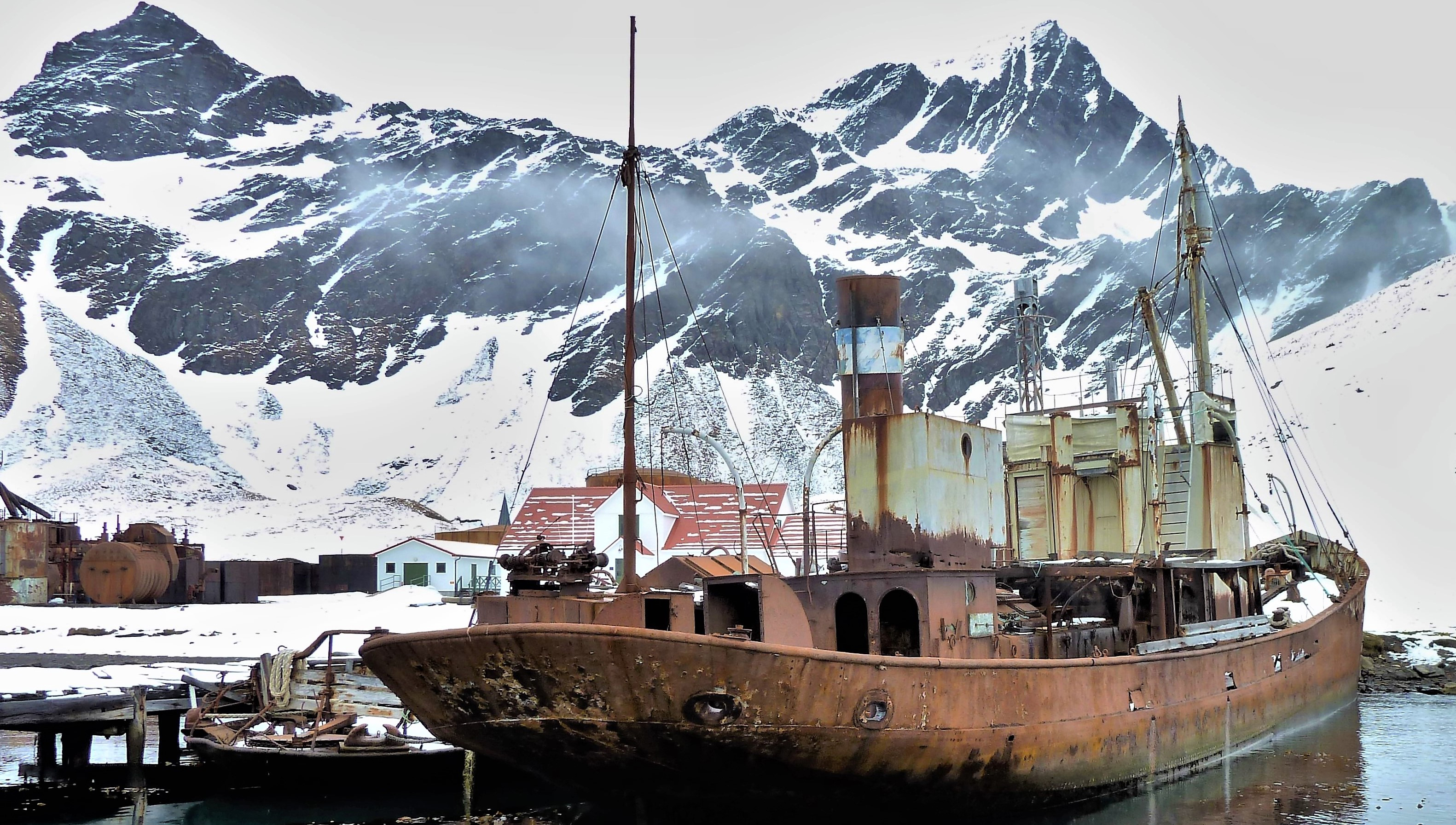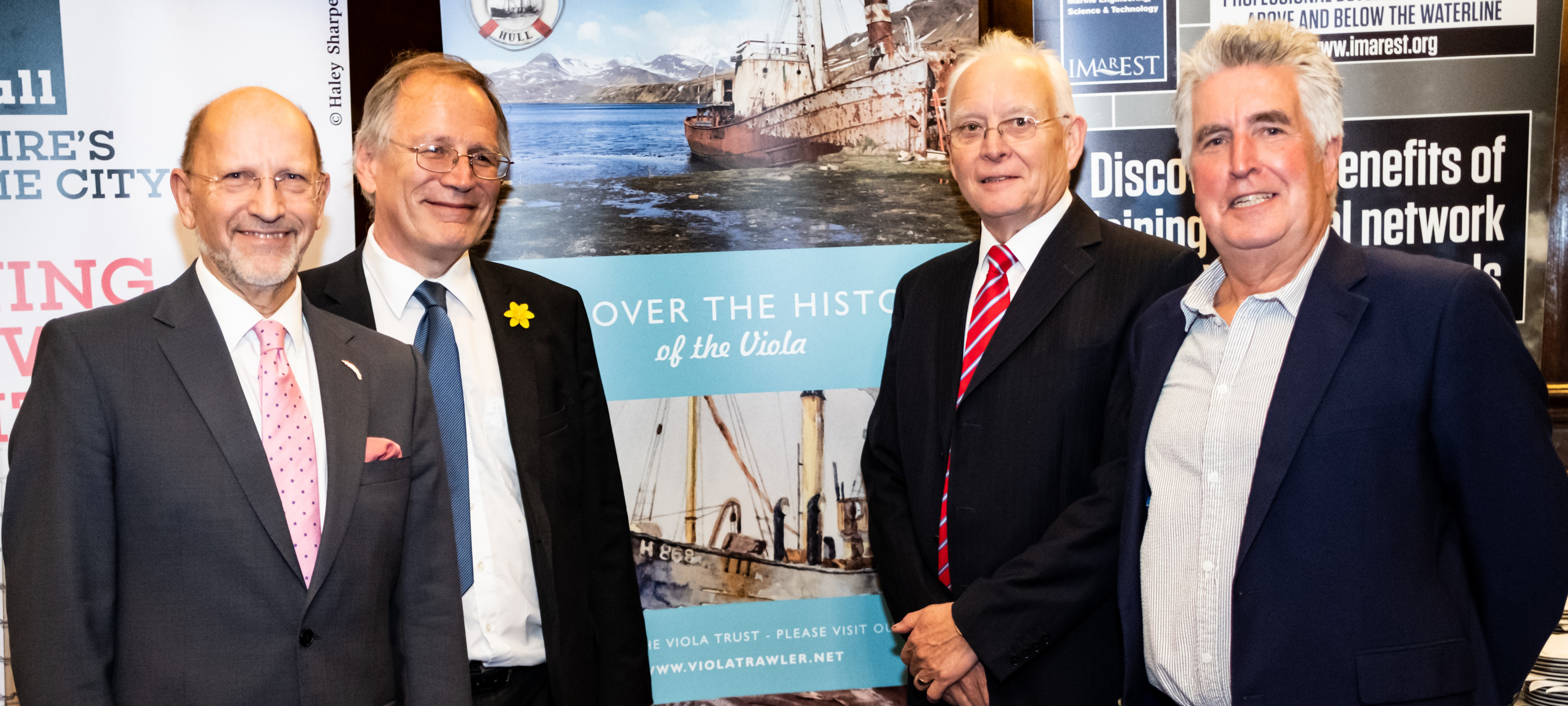Hopes of a homecoming – the campaign to bring a historic vessel back to Hull
27 September 2019

Following its successful spell as City of Culture in 2017, the port city of Hull has been looking to its maritime heritage to continue the regeneration effort. Phil Ascough reports from a meeting where the local maritime community came together to support the return of a very special vessel to the Humber
It's safe to say that the relaunch of the Nautical Institute's Humber Branch on 5 September 2019 was a huge success. We were regaled with tales of the Viola – a trawler which caught fish, whales, seals and even enemy U-boats in a career spanning more than 100 years, and tempted by a special gin and a nautical calendar produced to commemorate the vessel.
The event attracted a near-full house to Hull Guildhall, a city centre landmark which offers a sight and sound to behold as the carillon bells chime to the rise and fall of the Greenwich Meantime Ball.
Kicking off the proceedings, Nautical Institute vice-president Captain Duncan McKelvie told how the Humber Branch was founded in 1973 as the fifth in what has become a global network. Then he took his seat to hear from three guest speakers who are all renowned experts in their field.
Simon Green, director of cultural services at Hull Culture and Leisure Ltd, told how he is driving Hull City Council's campaign to deliver the Yorkshire's Maritime City project at a cost of £28m.
Dr Robb Robinson, a maritime historian based at Blaydes Maritime Centre and honorary research fellow of the University of Hull, spoke about the history of the Viola, from construction at the Cook, Welton and Gemmell shipyard in Beverley in 1906 to its current location, wedged into the beach at Grytviken in South Georgia.
Captain John Simpson, senior partner of Solis Marine, addressed the practicalities of bringing the Viola back to Hull – surveys which show the quality of the build is still holding up, and heavy-lift ships which are available to carry the vessel the 8,000 miles to the Humber. Cradle or slings is one of the big questions. The biggest is cash.
The Viola Trust is ticking over, generating working capital from innovative fund-raising projects as it pursues the big fish who could make a significant contribution to the £3m-plus target for repatriation and restoration.
Lottery money is not an option until the Viola is back in British waters. Viola gin, produced by the enterprising Hotham's Distillery, is generating income. A nautical calendar with 12 ships painted by East Yorkshire artist Larry Malkin will contribute cash from sales and from an auction of the originals. But these are ripples when the campaign needs a big wave.
With former home secretary Alan Johnson as patron – a man whose Hull West and Hessle constituency included the famous Hessle Road fishing community – and trustees led by Paul Escreet, chairman of SMS Towage, it's a charity with strong connections in the maritime sector, the corridors of power and the people and businesses of the local area.
The trustees are nothing if not thorough, and one of their first moves was to secure the permission of the Government of South Georgia and South Sandwich Islands to salvage the Viola and take it back to Hull for display.
Mr Johnson has a film production company ready and waiting to tell the Viola's story and his position is straightforward: 'We have the permissions we need, and she could be brought back – everything is in place except the money.'
Mr Green told the Institute's audience that Hull City Council found £10m to launch its Yorkshire’s Maritime City scheme and is in the process of raising the balance.
Key elements of the project are a major facelift for Hull's Maritime Museum and the transformation of the North End shipyard, with a former dry dock being renovated to accommodate the Arctic Corsair trawler, which recently moved from the River Hull to the Associated British Ports estate to undergo renovation. A second dry dock is waiting for the Viola.
You could say the Viola is the only vessel to have seen action in the Great War and the Falklands War!

Mr Green said: 'When the Arctic Corsair moved early on a Sunday morning, we knew there would be a crowd, but we didn't think it would be as big as it was, with 137,000 people following the activity on social media. As we prepare a new berth for the Viola, just imagine the interest in moving an older vessel not two miles but 8,000 miles as it comes home to tell its story alongside the Arctic Corsair. It will be amazing.'
No one knows more about the Viola's remarkable past than Dr Robinson, a Viola trustee and co-author with Ian Hart of the 2014 history Viola: The Life and Times of a Hull Steam Trawler.
His presentation, A Ghost Ship of Grytviken, traced the Viola's journey from the yard in Beverley nine miles along the River Hull to the Humber, a trip which back in 1906 took three tides.
Built by Charles Hellyer – 'a trawling tycoon and Shakespeare nut' – the vessel joined the boxing fleet in the North Sea, with men using rowing boats in the most perilous conditions to transfer the catch to cutters which would speed to Billingsgate to feed the nation's growing appetite for fish and chips.
Requisitioned to defend the coast of the British Isles during the First World War, Viola operated out of Shetland and then Newcastle, playing a key part in the sinking of two U-boats. The vessel never returned to Hull.
When peace came, it was sold to a Norwegian company, renamed Kapduen and then Dias, and sent to catch whales off the coast of west Africa. The next owner, based in Argentina, put it to work catching elephant seals. It later operated as an exploration vessel before being laid up on the beach.
It was still there in 1982 when some Argentine scrap metal merchants landed in Grytviken with the aim of cutting up Viola and its companions. But they hoisted the Argentine flag and that triggered the Falklands War.
Dr Robinson said: 'You could say the Viola is the only vessel to have seen action in the Great War and the Falklands War!'
Captain Simpson said he would be 'stripping out the romance' because it was 'all about getting her back'. He told of the surveys of Viola carried out in 2015 and 2016 – 'she's built like Dreadnought' – and said there is no doubt the salvage of the vessel is 'do-able technically'.
And then his passion got the better of him: 'Viola deserves more than a set of commemorative stamps. The men who went to sea on Viola endured some of the harshest conditions that we could imagine – and that was just to bring us fish and chips.
'When the war started they went back to sea and hunted mines and U-boats to keep our country safe. There's no memorial to what they did, and Viola is one of the very few opportunities for us to stand where these men stood.
'Within the industry there is a great hunger to be involved in a project like Viola and we have come across great enthusiasm. Viola has attracted worldwide interest. Everybody wants a piece of this because nobody else has got anything like it.'
- Viola: The Life and Times of a Hull Steam Trawler, by Ian Hart and Robb Robinson, is available from the Nautilus Bookshop
- For more about the Viola, the calendars and how to support the campaign please visit the Viola website
- To place an order of Viola gin, please visit the Hotham's website
Tags
